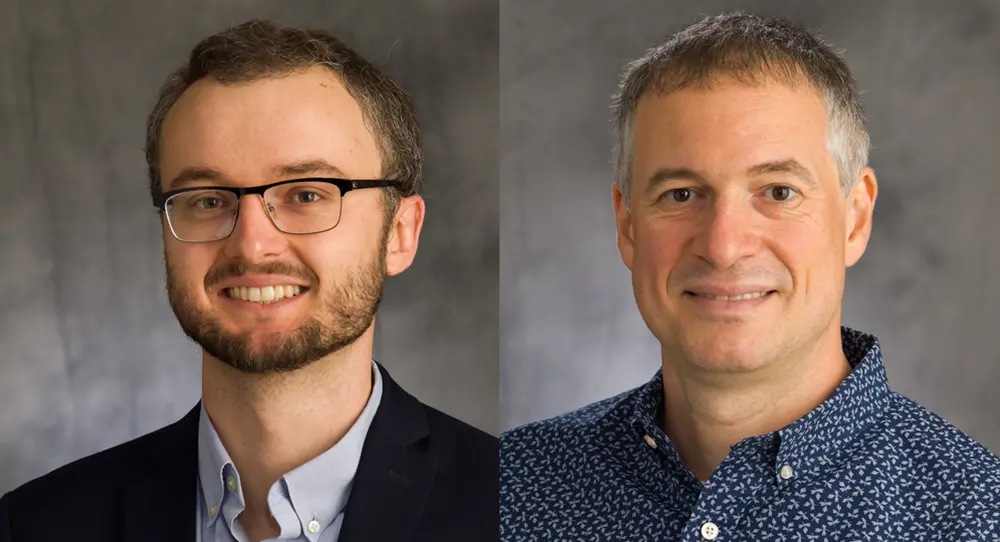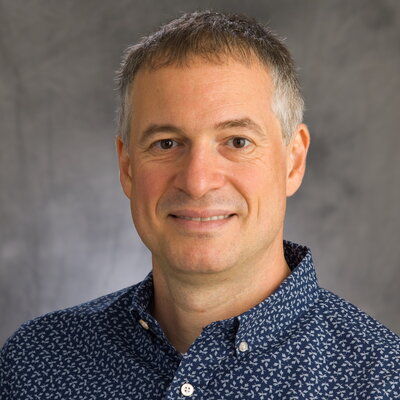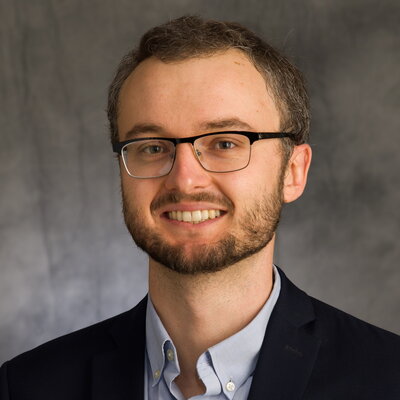
Two chemistry faculty members, Liviu Mirica and Nick Jackson, have been selected by the Center for Advanced Study to pursue individual creative scientific projects in the 2025-26 academic year.
The Center for Advanced Study (CAS) at the University of Illinois is an interdisciplinary center that works with every department — from hard science and engineering to humanities and the arts — to support the scholarly work and research of high-achieving faculty by facilitating connections among top scholars and providing funding to pursue projects.
Mirica, William H. and Janet G. Lycan Professor of Chemistry, is one of six Illinois faculty members selected as CAS Associates. They are tenured faculty members whose proposals are selected in an annual competition. These appointments grant one semester of teaching release time to pursue an individual scholarly or creative project. Associates also participate in a yearly roundtable discussion of research interests and are invited to offer a future CAS presentation.
And Jackson is one of six Illinois faculty members selected as CAS Fellows. They are untenured Illinois faculty members whose proposals are selected in an annual competition. These appointments grant one semester of teaching release time to pursue an individual scholarly or creative project and participate in a yearly roundtable discussion of research interests and are invited to offer a future CAS presentation.
Mirica proposal: Next Generation Diagnostic Agents for Alzheimer's Disease

Alzheimer’s disease (AD) is the most common neurodegenerative disease and the sixth leading cause of death in the United States, but currently, there is no definitive disease-modifying treatment for AD and its diagnosis with high accuracy requires a detailed post-mortem examination of the brain. There is a huge unmet need to develop diagnostic agents for early detection of AD.
Over the past several years, the Mirica research group has successfully developed a series of multifunctional compounds that can act as positron emission tomography (PET) imaging agents for AD. While PET imaging has proven useful in understanding the disease progression, it can be invasive and expensive. Magnetic resonance imaging (MRI) has emerged as a potential complement to PET analysis, and the Mirica research group is now developing novel MRI contrast agents for the early diagnosis of AD.
Mirica said he will devote appreciable efforts toward the development of next-generation diagnostic agents for AD and will visit comprehensive neuroimaging centers at Northwestern University, Caltech, and Massachusetts General Hospital to establish the necessary collaborations to pursue the translation into the clinic of the diagnostic agents developed in his laboratory.
Jackson proposal: Molecular Engineering of Sustainable Polymers with Physics-Based Modeling, AI

The growing emphasis on environmental remediation and sustainability emphasizes the need for eco-friendly commodity materials, especially for polymeric materials. Existing commodity polymers, which are derived from non-renewable petrochemicals, pose significant environmental challenges due to their limited recyclability and persistence in the environment. Biology reminds us that high-performing and sustainably synthesized polymers can be created with negligible environmental impact. To explore eco-friendly polymer design, we need to understand the chemical reactivity necessary to make and break bonds in polymer materials. But experiments to obtain detailed reactivity information would be difficult and costly, so the field of polymer synthesis could benefit from advances in computational molecular science that can conduct such experiments in silico. As a CAS Fellow, Jackson will perform proof-of-principle work to create a novel computational framework that leverages physics-based modeling and artificial intelligence (AI) to engineer the molecular structures of sustainable and synthesizable, lactone-based polymers.